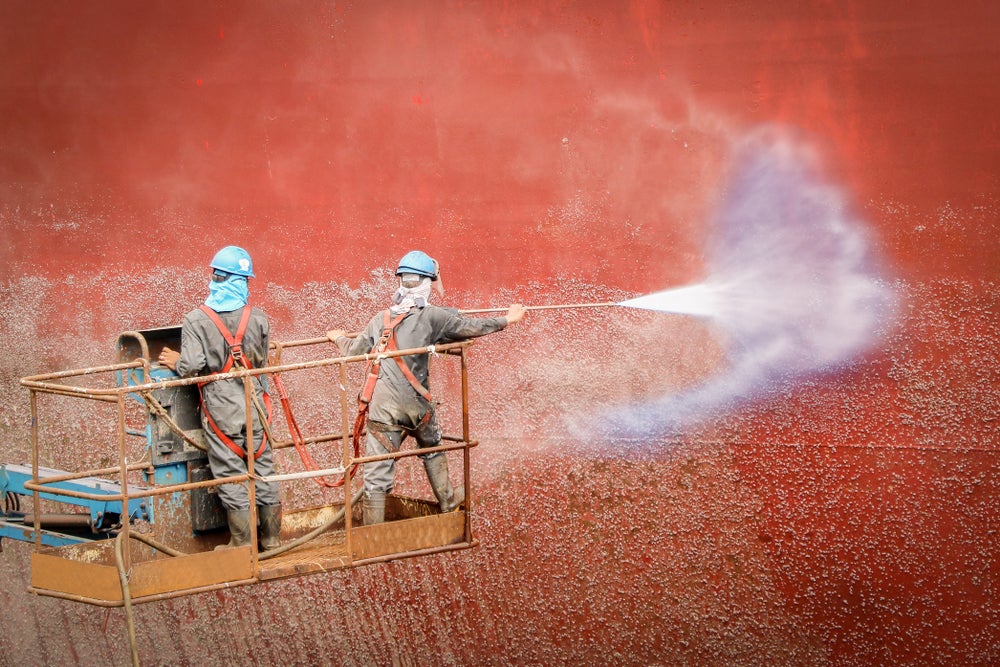Today, it is well understood that efficiency is the immediate aim of the game if we are to meet shipping’s emissions reduction targets. Of all the tools in the kit, antifouling stands out as a no-brainer option to mitigate fuel consumption, decrease emissions, and cut operational expenses by combatting biofouling.
The potential of biofouling should not be underestimated – it profoundly affects a vessel’s efficiency, emissions, and the health of marine ecosystems. This hidden threat, characterised by the rapid accumulation of aquatic organisms on submerged surfaces, compromises vessel performance, increases drag, and inflates operational expenses.
Emerging technologies, particularly ultrasonic antifouling systems, provide a transformative solution to this age-old challenge.

Impact of organism accumulation
The biofouling sequence starts from the moment a vessel enters the water, quickly attracting a diverse array of marine life. Micro-fouling initiates the process, leading to the formation of biofilm, followed by the colonisation of macro-fouling organisms like barnacles and mussels. This buildup creates rough surfaces, increasing drag and impairing hydrodynamic performance.
Even in its nascent stages, micro-fouling contributes to friction, requiring heightened energy consumption to maintain speed. As ships contend with escalating resistance on the hull, fuel consumption, emissions, and operational costs soar as efficiency declines.
Unchecked marine growth not only impacts the hull, but also affects crucial components like sea chests and bow thrusters, compromising vessel integrity by clogging seawater intake systems, reducing flow, contributing to corrosion, and escalating the frequency of maintenance intervals.

US Tariffs are shifting - will you react or anticipate?
Don’t let policy changes catch you off guard. Stay proactive with real-time data and expert analysis.
By GlobalDataAddressing these impacts demands proactive antifouling measures, allowing vessel owners to proactively mitigate risks and extend vessel service life.
Environmental governance
The IMO recognises biofouling management as an effective tool for enhancing energy efficiency and reducing ship emissions, as evidenced by its inclusion as a key optimisation factor in its Carbon Intensity Calculator (CII).
A study from the Global Industry Alliance for Marine Biosafety, part of IMO’s GloFouling Partnerships Project, reveals that maintaining clean hulls can cut a ship’s GHG emissions by up to 25%, aiding the IMO’s goal of net-zero emissions by 2050.
Biofouling not only increases emissions but also facilitates the spread of invasive aquatic species, threatening marine ecosystems and biodiversity. To address this, the IMO has implemented strict Biofouling Guidelines, ensuring effective biofouling management and the protection of marine life.
These guidelines require vessels to have a Biofouling Management Plan (BMP) and adhere to national regulations, reflecting a unified global effort to safeguard marine environments and promote sustainable maritime practices.
Advances in biofouling management
Conventional biofouling management methods, such as antifouling coatings and periodic hull cleaning, present notable challenges, including environmental concerns, high costs, and labour-intensive maintenance. The reactive nature of manual cleaning, whether underwater or during dry-docking, allows biofouling to accumulate, resulting in hidden costs and operational disruptions.
Proactive solutions, like Marine Growth Prevention Systems (MGPSs) and Ultrasonic Protection (USP), offer sustainable, efficient alternatives. MGPSs use copper anodes to deter marine organisms from settling in seawater intakes, thus safeguarding against overheating, machinery shutdowns, corrosion, and reduced firefighting capability. MGPSs are particularly effective in areas like sea chests and box coolers, addressing macro-fouling and providing volume treatment.
In contrast, ultrasonic protection (USP) is optimal for early-stage prevention of micro-fouling and surface treatment. Ultrasonic antifouling systems like Cathelco’s USP DragGone complement antifouling coatings by keeping the hull clean from day one without using harmful chemicals.
Ultrasonic waves emitted by transducers attached to the inside of the hull disrupt biological attachment by vibrating the hull surface, preventing the attachment of microorganisms, plants, algae, and marine animals. This method is effective against both macro and micro-fouling, enhancing hydrodynamic performance and reducing fuel consumption by up to 13%.
The ultrasonic approach
The importance of proactive hull fouling prevention cannot be overstated, as even a brief period without protection can lead to substantial increases in fuel consumption and CO2 emissions.
The EU-funded CLEANSHIP project, in collaboration with Brunel University and Lloyd’s Register, underscores the significant economic and environmental impact of hull fouling on ships. The project advocates for a non-invasive, environmentally friendly solution using long-range ultrasonic waves for both prevention and early detection of fouling.
At the core of this solution are two advanced technologies: guided wave and heterodyning. Guided wave, traditionally used in non-destructive testing, employs an array of transducers to create vibrations on the hull’s surface.
Heterodyning, originally employed in radio frequency tuning, generates multiple frequencies to target a broader range of fouling organisms. Single-frequency transducers fall short in protecting against all species of fouling, but heterodyning’s capability to produce multiple frequencies ensures comprehensive protection across diverse marine environments and seasons. This adaptability ensures thorough biofouling protection.
Economic and environmental stability
In navigating the persistent challenge of biofouling, embracing innovative technologies like MGPS and ultrasonic antifouling systems emerge as sustainable solutions. These methods not only enhance operational efficiency but contribute to emission reduction and marine ecosystem preservation.
By targeting both micro and macro-fouling, these solutions yield substantial cost savings, fuel efficiency improvements, and ultimately contribute to a cleaner, greener maritime ecosystem while safeguarding vessel integrity and optimising fleet performance. Devising a winning game plan for effective biofouling management has never been more accessible.




